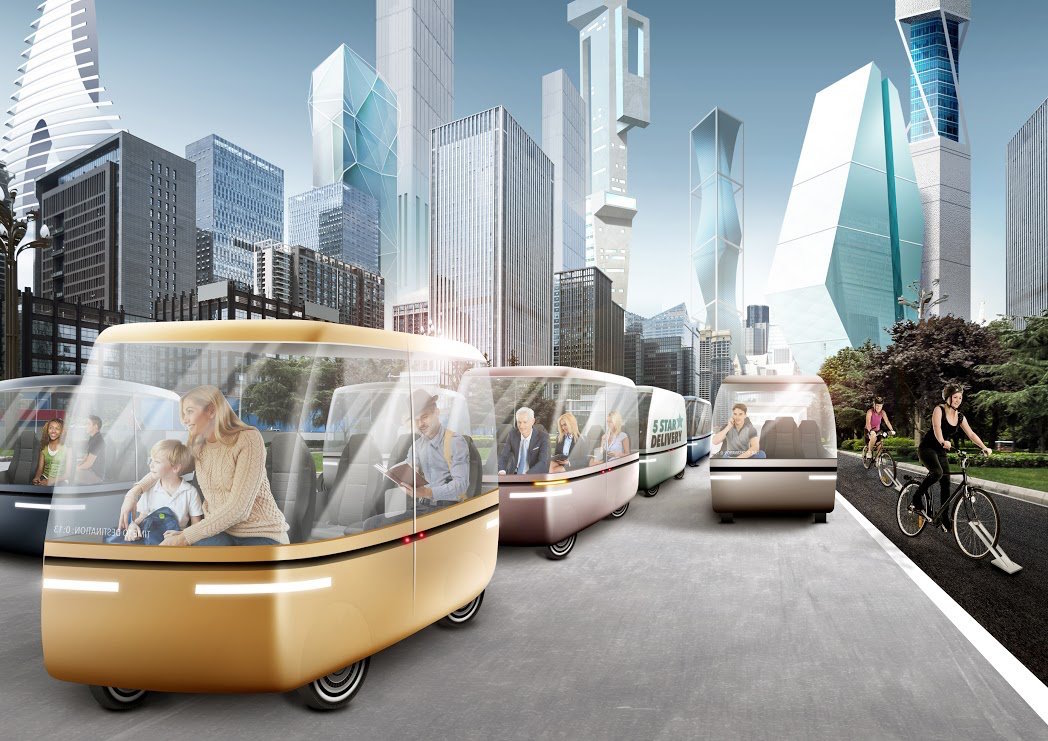Every fall, MIT Technology Review’s editors get together to begin the months-long process of reviewing their coverage. The goal? To create a list of the top ten technological advances from the last year that will have the greatest longterm global impact on consumers.
While the editors do give key players a shout-out – Google, for example, dominates the list – the purpose of the annual compilation goes further than giving credit to innovating companies.
“This is our attempt to alert our readers: These are the technologies that you really need to or should pay attention to next year, and also going into the next few years,” MIT Tech Review’s editor David Rotman told Business Insider.
The timeline to commercial use can vary – this year’s picks, for example, range from technologies that are currently on the market to ones that are still in the lab and just barely making headlines – but two things have to be certain: The technology must be “fundamentally new,” and it needs to make a huge difference in the way we live for years to come.
Here's the final list of the technologies and the key players making it happen:
3D Metal Printing: New machines are making 3D printing of metal parts practical for the first time.

Key players:Markforged | Desktop Metal | GE
Breakthrough: Now printers can make metal objects quickly and cheaply.
Why it matters: The ability to make large and complex metal objects on demand could transform manufacturing.
Artificial Embryos: Scientists have begun to forge embryos out of stem cells.

Key players:University of Cambridge | University of Michigan | Rockefeller University
Breakthrough: Without using eggs or sperm cells, researchers have made embryo-like structures from stem cells alone, providing a whole new route to creating life.
Why it matters: Artificial embryos will make it easier for researchers to study the mysterious beginnings of a human life, but they're stoking new bioethical debates.
Sensing City: Alphabet’s Sidewalk Labs plans to create a high-tech district to rethink how we build and run cities.

Key players:Sidewalk Labs | Waterfront Toronto
Breakthrough: A Toronto neighborhood aims to be the first place to successfully integrate cutting-edge urban design with state-of-the-art digital technology.
Why it matters: Smart cities could make urban areas more affordable, livable, and environmentally Friendly.
AI for Everybody: Making machine-learning tools available through cloud services could spread artificial intelligence far and wide.

Key players:Amazon | Google | Microsoft
Breakthrough: Cloud-based AI is making the technology cheaper and easier to use.
Why it matters: Right now, the use of AI is dominated by relatively few companies, but as a cloud-based service, it could be widely available to many more, giving the economy a boost.
Dueling Neural Networks: By playing cat-and-mouse games with data, a pair of AI systems can acquire an imagination.

Key players:Google Brain | DeepMind | Nvidia
Breakthrough: Two AI systems can spar with each other to create ultra-realistic original images or sounds, something machines have never been able to do before.
Why it matters: This gives machines something akin to a sense of imagination, which may help them become less reliant on humans-but also turns them into alarmingly powerful tools for digital fakery.
Babel-Fish Earbuds: Google’s Pixel Buds show the promise of real-time translation, though the current hardware is terrible.

Key players:Google | Baidu
Breakthrough: Near-real-time translation now works for a large number of languages and is easy to use.
Why it matters: In an increasingly global world, language is still a barrier to communication.
Zero-Carbon Natural Gas: A new engineering approach to natural-gas plants puts carbon dioxide to work.

Key players:8 Rivers Capital | Exelon Generation | CB&I
Breakthrough: A power plant efficiently and cheaply captures carbon released by burning natural gas, avoiding greenhouse-gas emissions.
Why it matters: Around 32 percent of U.S. electricity is produced with natural gas, accounting for around 30 percent of the power sector carbon emissions.
Perfect Online Privacy: A tool developed for blockchains makes it possible to carry out a digital transaction without revealing any more information than absolutely necessary.

Key players:Zcash | JPMorgan Chase | ING
Breakthrough: Computer scientists are perfecting a cryptographic tool for proving something without revealing the information underlying the proof.
Why it matters: If you need to disclose personal information to get something done online, it will be easier to do so without risking your privacy or exposing yourself to identity theft.
Genetic Fortune Telling: Large genetic studies are enabling scientists to predict common diseases and human traits.

Key players:Helix | 23andMe | Myriad Genetics | UK Blobank | Broad Institute
Breakthrough: Scientists can now use your genome to predict your chances of getting heart disease or breast cancer, and even your IQ.
Why it matters: DNA-based predictions could be the next great public health advance, but they will increase the risks of genetic discrimination.
Materials' Quantum Leap: Researchers recently used a quantum computer to model a simple molecule. That’s just the start.

Key players:IBM | Google | Harvard's Alan Aspuru-Guzik
Breakthrough: IBM has simulated the electronic structure of a small molecule, using a seven-qubit quantum computer.
Why it matters: Understanding molecules in exact detail will allow chemists to design more effective drugs and better materials for generating and distributing energy.
Visit MIT Technology Review to learn more about the top 10 breakthrough technologies.

